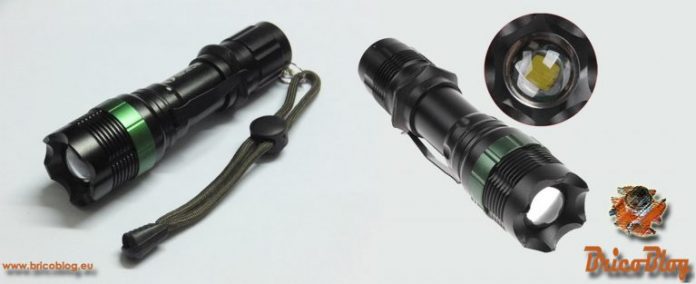
LED flashlights have been overwhelmingly imposed in recent years.
The advantages of LED technology, among which is energy efficiency, as well as great light power, have reached not only conventional lighting elements, but also pocket lighting, that is, flashlights.
If you want to know more about LED technology, In this article advantages of LED lighting you have a lot of information about it.
Analysis of LED flashlights.
In DIY we often find ourselves with situations that force us to provide extra lighting and, on many occasions, due to the inaccessibility of the work, we have to resort to a flashlight. For this reason, today we will dedicate this article to LED flashlights, and we will see some of the different types that we can find, their characteristics, and their advantages. We will start with the elements that make up an LED flashlight.
Components of LED flashlights
To begin with, we will begin by analyzing the different parts that make up an LED flashlight, being the following:
- Reflector
- leds
- Heat dissipator
- electronic driver
- Drums
- switch
All these components form a whole, thanks to the flashlight housing which, generally in the case of LED flashlights, is usually made of aluminium.
Parts and components of LED flashlights.
Kinds of LED flashlights
Depending on the power, the use, the form of power, etc., we can broadly make the following classification of LED flashlights.
Flashlights for non-specialized use
In this segment we include flashlights that use conventional batteries and, therefore, their lighting power is less than other types of flashlights that we will see below.
These are the flashlights that are commonly used in the home environment.
LED Flashlight = Pocket lighting.
Flashlights for DIY and professional use
This type of flashlight is the one that allows you to focus the light beam towards a certain point, while keeping both hands free to work. This type is more widespread in the professional and DIY field than the previous ones. Within this segment, there are different fastening methods, powers and, of course, prices.
Professional and DIY range in LED flashlights. Hands-free flashlights.
tactical flashlights
These provide higher lighting powers than the previous ones, requiring the use of lithium batteries and the like.
They also have a high resistance against shocks, while being impermeable to water thanks to the rubber gaskets that it incorporates in all its removable parts.
rechargeable flashlights
These have the advantage of being more environmentally friendly, since they do not generate waste or waste material, as they do not have to dispose of used batteries and purchase new ones.
The batteries that it incorporates can be recharged either by means of a specific charger connected to the electrical network, or by connecting them to a computer via a USB port, or by connecting them to a car or motorcycle power outlet.
Therefore, the latter are the best option to have at home or in the workshop.
Within rechargeable flashlights, there are two classes, depending on the type of battery.
Rechargeable LED flashlights.
NiMH rechargeable batteries:
These are nickel-metal hydride or nickel-metal hydride (Ni-MH) cells or batteries. It is a type of rechargeable battery that uses a nickel oxyhydroxide (NiOOH) anode, as in the nickel cadmium battery, but whose cathode is made of a metal hydride alloy.
NiMH rechargeable batteries.
Each Ni-MH battery can provide a voltage of 1.2 volts and a capacity of 0.8 to 2.9 amps/hour.
This type of rechargeable batteries does not ensure great power or excessive autonomy, which is why they are more intended for domestic use.
LI-ION rechargeable batteries:
On the other hand, lithium ion batteries, also called Li-Ion batteries, are devices designed for the storage of electrical energy, which use a lithium salt as an electrolyte that obtains the necessary ions for the reversible electrochemical reaction that takes place between the cathode and the anode.
Among some of the most remarkable properties of Li-ion batteries, are the following:
LI-ION rechargeable batteries.
- Lightness of its components
- High energy capacity
- discharge resistance
- Minimal “memory” effect.
- Ability to function with a high number of regeneration cycles.
These characteristics make it possible for LED lights to have greater light power and greater range.
These types of batteries are more expensive than the previous ones, although, depending on the use that is going to be given to them, they can be more than amortized in the medium term.
Which flashlight should I decide on?
Obviously there are better flashlights than others, but we cannot say categorically that ONE is the best of all.
To have an answer to this question, you must first ask yourself… what are my needs? Once you have your needs clear, you can look for an LED flashlight that fits those and, among these, find the one that has the best quality/price balance.
Following this line, we have seen a website that has made, in our opinion, a successful selection of the best LED flashlights, taking into account the characteristics sought and weighing their quality and price. Do you take a look at it?



